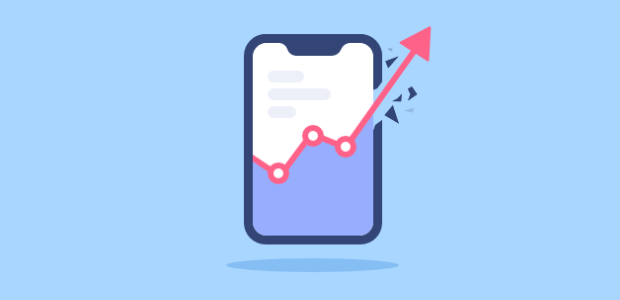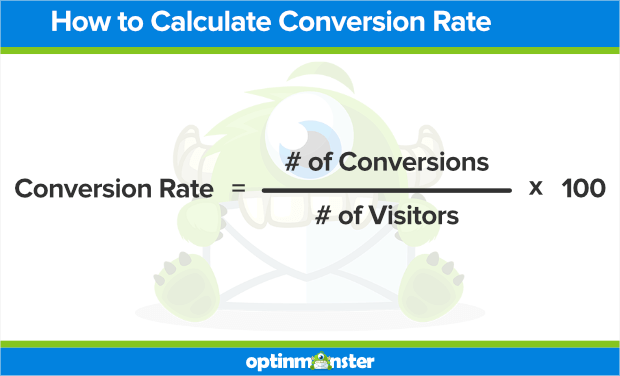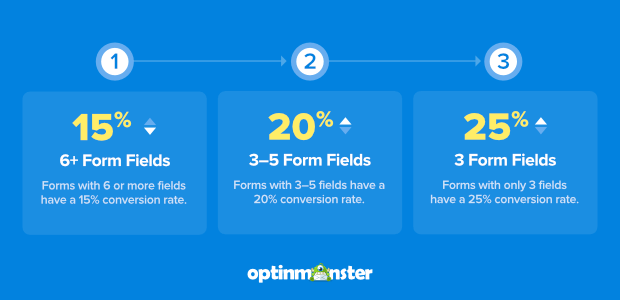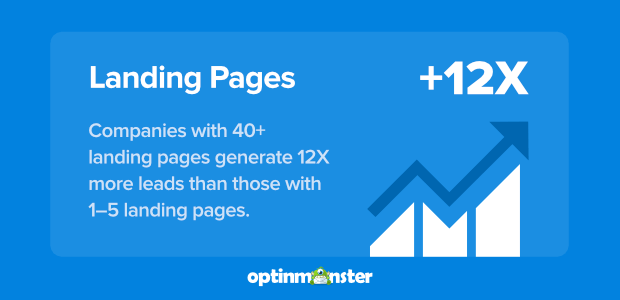Do you feel like your conversion rates are lower than usual? Sometimes seeing the statistics can help you know what works best for your conversion rate optimization strategy.
In this article, we’ve picked out the most important conversion rate optimization statistics to help you move forward with your strategy and get more conversions!
What Is a Conversion Rate?
Before we dive into the stats, let’s go over what conversion rate really means.
The conversion rate is the percentage of visitors who visit your website and complete your desired action. For example, if 100 people visit your site, and 25 people end up buying your product within a given time, your conversion rate is 25%.
But conversion rates can mean anything. You can calculate it for the number of emails collected, for the number of people who purchased a specific product, for sign-ups to a course, and even more.
A high conversion rate means your website design, sales copy, and marketing strategy is going well. People want what you’re offering, and they can easily get it.
Now that you know exactly what a conversion rate is, let’s look at the statistics.
CRO Statistics
- General Conversion Rate Statistics
- Landing Page Conversion Rate Statistics
- CRO Software Statistics
- Understanding Your Visitors
- Call to Action Conversion Rate Statistics
General Conversion Rate Statistics
The average global conversion rate for eCommerce companies is 2.86%. It seems really low, doesn’t it? This low conversion rate can be due to a ton of things like poor optimization, not enough personalization, and a product that nobody understands.
About 8 out of 10 (82%) marketers say that simply understanding how to track and test conversion rates effectively is “somewhat” or “very challenging.” Perhaps that’s why 68% of small businesses don’t yet have a conversion rate strategy in place.
In fact, only the top 10% of websites have a conversion rate that’s 11.45% or higher. In other words, if you’re in the double digits, you’re a rockstar!
SEO has a lot to do with conversion rates. Pages that rank first on search results pages have a 34.36% click-through rate! This drops dramatically after the first few results.
The benefits of ranking for your target keywords explains why companies are investing as much as $2,000 per month on CRO tools.
You might be surprised to know the average click-through rates are even lower than conversion rates, with 40% of marketers having a CTR of 0.5% or lower. Because of this, a company must identify problems within the strategy and fix them.
Landing Page Conversion Rate Statistics
Having your landing page optimized for conversions should be a high priority for your business. A useful landing page across all industries can boost conversions by 2.35%.
The more landing pages you have, the higher your conversion rate will be. Companies get 55% more leads when they increase their number of landing pages from 10-15.
Not only does the number of pages matter, but also the length. Long-form landing pages, or squeeze pages, with a CTA at the end can generate up to 220% more leads than above the fold call to action.
Your landing page should focus on one offer at a time, or it can be confusing for users to make a decision. Landing pages with multiple offers get 266% fewer leads than single offer pages.
And when talking about form fields, less is more. Forms with more than 6 fields have a 15% CR, while forms with 3-5 fields have a 20% CR, and forms with only 3 fields have a 25% CR.
But surprisingly, the average number of form fields is 11. Decreasing your number of fields from 11 to 4 can increase conversions by an entire 120%!
But it’s always important to test your landing pages. 61% of companies and agencies that use landing pages only run tests 5 or fewer times per month.
A lack of testing is probably why 44% of homepages are mistaken for landing pages. Sending users to homepages instead of landing pages is a huge mistake, and it hurts conversion rates significantly. Imagine clicking a Facebook ad and being directed to a homepage, only to have to search for the offer you just saw on the ad.
Conversion Rate Optimization Software Statistics
Testing your landing pages is a must for increasing their effectiveness. Split testing tools are so accurate that 74% of CRO programs increase leads and sales. The most common method used for CRO is A/B or split testing. 44% of companies use this method.
There are even a ton of tools that offer split testing. OptinMonster is one. With OptinMonster, you can increase your conversions by testing out different content, headlines, and campaign triggers to see what converts best.
However, even with great tools available, 48% of companies don’t use tools to optimize their conversion potential. But considering you can see a 223% ROI on average with specific CRO tools, you’d be kicking yourself if you didn’t use them. As a matter of fact, companies realize it’s so valuable that 55% plan on upping their CRO tool budget in the coming year.
Understanding Your Visitors
To have the best conversion rate optimization strategy, you must first understand how users think. In the end, it’s paying attention to little details that can matter the most.
Once a visitor lands on your page, you only have 4 seconds to capture the visitor’s attention. So make sure your website is optimized across all devices. A 1-second delay can cause a 7% decrease in conversion rates.
Also, pay close attention to design. The largest percentage of your visitors will leave within 0-8 seconds of viewing your page. 92.6% of people say the way the page looks is the main factor affecting their purchase decision.
Social proof also plays a large part in your companies conversion rates. Did you know that 93% of people say reviews impact their purchase decisions?
Not only that, but people usually make subconscious judgments within 90 seconds of seeing the product and because of this, having good customer reviews is key.
Call to Action Conversion Rate Statistics
Having a call to action is one of the best ways to get more conversions. More than 90% of visitors who read your headline will also read your CTA copy.
There are many things you can do to make your call to action more effective.
First of all, personalizing your call to action can convert 42% more visitors into leads than a generic CTA. One company found that changing the text on a button from “you” to “me” led to a 90% lift in conversions.
Secondly, anchor text calls to action increase conversion rates by a whopping 121%. Hubspot tracked a bunch of posts and found that the anchor text CTA alone was responsible for between 47% and 97% of a posts leads.
Thirdly, calls to action that are surrounded by empty space and less clutter can increase your conversions by 232%. Eliminating fluff makes it way easier for the visitor to navigate their way to the CTA.
And lastly, using a 2-step call to action is proven to improve lead generation and convert quickly. It can increase conversions as much as 785%.
As mentioned earlier in the landing page section of this article, long pages with a CTA at the bottom are much more effective for many, while short pages with above-the-fold CTAs can sometimes harm your CR.
However, for companies like Canva, Crazyegg, and Moz, short forms with above-the-fold CTA’s reduce friction and take care of people with short attention spans.
To find out what works best for you, you’ll need to do a little testing.
How Can You Get Higher Conversion Rates?
In this section, we go over some conversion rate stats to help you develop your own conversion rate optimization strategy.
People love to learn visually. Using videos on your landing pages can increase your conversions by 86%. And, if you’re selling a product, using a product demonstration video can get 73% more people to buy.
Let’s talk some more about landing pages. Remember, the more landing pages you use, the better your conversions will be.
Businesses with over 40 landing pages generated 12 times more leads than those with 1-5 landing pages. The high number of leads is why 48% of companies create a new landing template for each marketing campaign.
70% of your visitors will abandon your site and never return. It doesn’t hurt to try and capture at least some of these visitors into an email campaign. You can add an exit-intent popup on every page with exit-intent technology.
Here’s another surprising statistic: removing the navigation menu on your website can increase CR by 100%. That’s because each navigation link represents a different conversion goal, and each one serves as an exit route (excuse) for the visitor to leave the intended conversion page.
There you have it! Now that you know all the important conversion rate statistics, what will you do to boost your conversion rate optimization strategy?
If you want an immediate solution to your conversion rate optimization needs, look no further than OptinMonster. With OptinMonster, you can create highly customizable campaigns quickly and start converting today!















Add a Comment